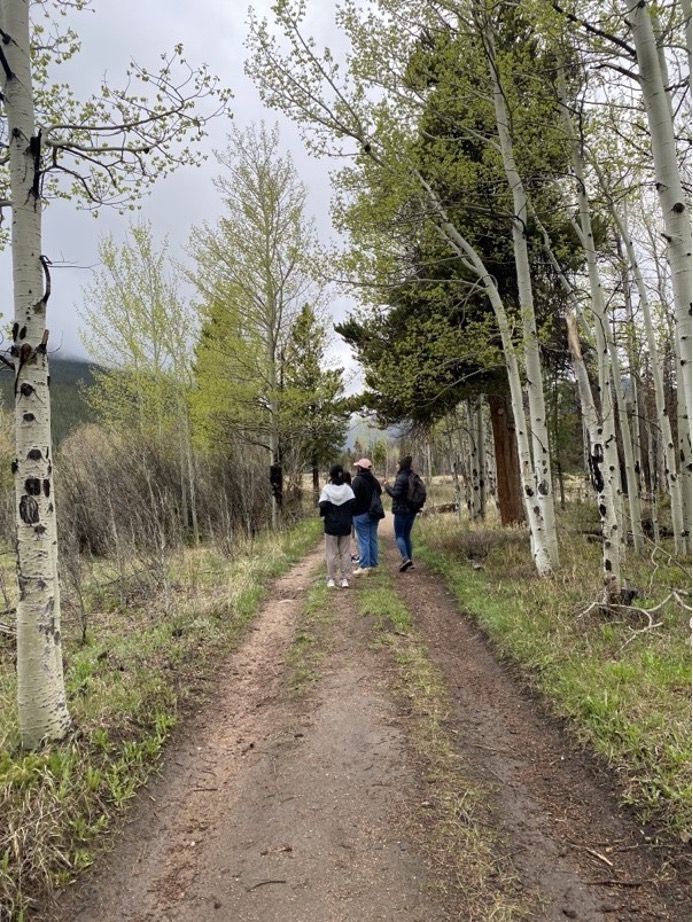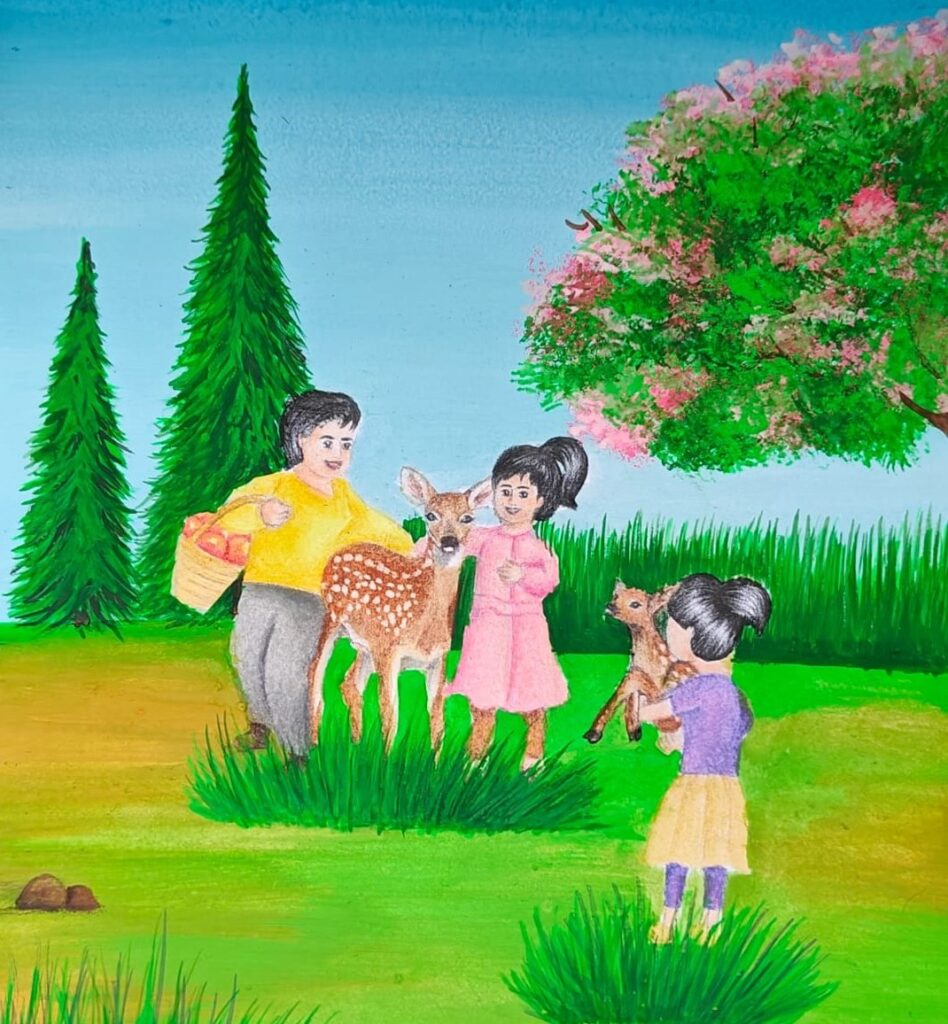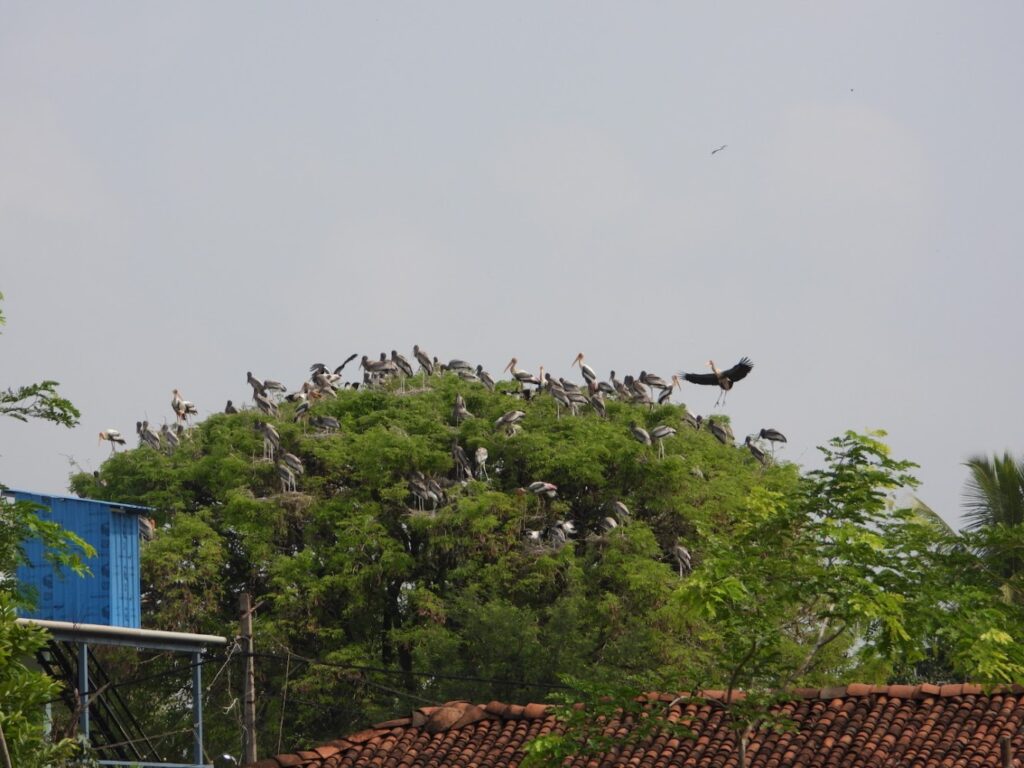Spending time in nature has a unique way of revealing the connections between natural ecosystems and the diverse communities we live in. In June of 2023, eight high schoolers of colour identifying as girls and gender non-binary youth gathered in the mountains of Colorado to explore these ties in the great outdoors. From hands-on outdoor activities guided by leaders of colour during a three-day event, the students learned to look closely at ecosystems, racial diversity and themselves.
As a research assistant for this project, I (Morgan Murphy) had the chance to weave together their insights on what they learned during this event. These eight students, also the co-authors of this piece, discussed how social and environmental systems relate to one another. I share their insights below.
Building community in nature
In the same way that biodiversity contributes to healthy ecosystems, human diversity contributes to healthy social systems. This event bridged the two by teaching us about diversity, equity, inclusion, and justice (DEIJ), and about how biodiversity and outdoor experiences can be symbolic of human diversity.
As the bus rumbled out of the city, the landscape began to shift. With each mile the hum of city life gave way to the silence of nature, creating room for us to connect with each other in new ways. The changing views mirrored our conversations, as we started to reflect on the links between our own communities and our shared identities. As we hiked along rocky trails, watched birds flit through the trees, and sifted through river sand in search of tiny insects, those connections deepened. Together, we found our place in nature and in each other, realising that we are as much a part of these ecosystems as they are a part of us.
Shobha shared the photo below, explaining “I was sharing a moment with others who are like me, in a place where I felt so small compared to the mountains, and yet felt like I belonged with the group I was with.”
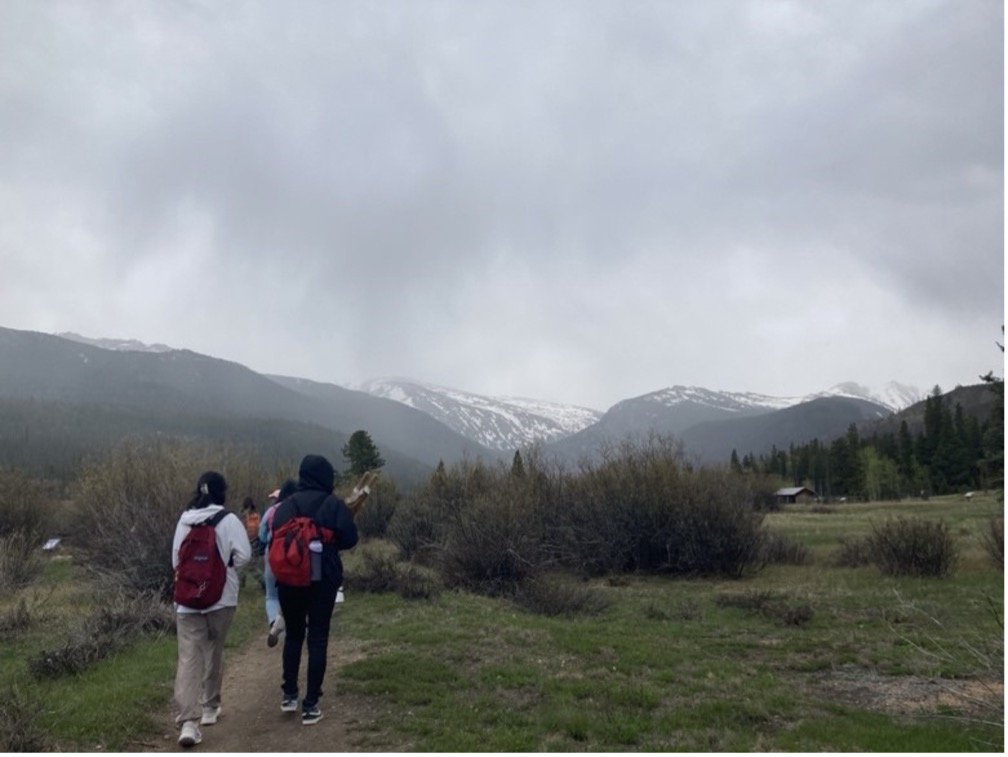
Personal growth through adventure
During one of the event’s activities, a ropes course, we faced challenges both individually and as a group. Climbing high above the ground, swinging across wide gaps, and balancing on thin ropes brought a rush of adrenaline unlike anything we had felt before.
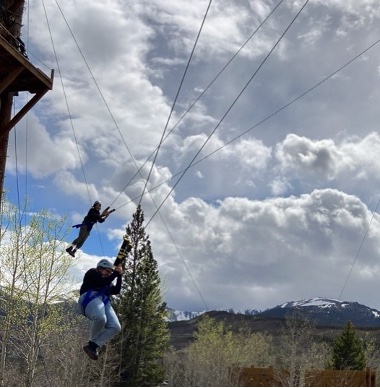
The fear of slipping or falling was real, but so was the exhilaration of pushing through it.
Each step we took, though wobbly at first, brought a growing sense of accomplishment and confidence. As we caught our breath at the end of each challenge, it became clear that these moments of fear and triumph mirrored the struggles we often face in life with marginalised identities. The uncertainty and the vulnerability echoed the challenges of navigating a world that isn’t always built for us. But just as we did on the ropes, we found strength in ourselves and in each other, learning that perseverance through fear can lead to new heights, both on the course and in life.
In the group ropes course activities, we experienced firsthand how mutual support and collaboration can elevate our collective strength. As we tackled obstacles high above the ground and navigated tricky balance beams, we realised that our success depended on more than just individual skill; it required our collective effort and encouragement. This dynamic mirrored the way certain animal species, like bees or ants, work together in cohesive groups to thrive, each contributing its unique role to support the community’s well-being.
The stream macroinvertebrate survey activity deepened our awareness of the parallels. As we examined the myriad of tiny bugs that live in the river’s sand, we were struck by how their collective work contributes to the health of the aquatic environment. This small yet crucial part of the ecosystem highlighted a powerful metaphor for social diversity. Just as these bugs, though often unnoticed, play an essential role in maintaining the river’s balance, so too do individuals within a community contribute to its overall health and resilience. Kaleena, for example, explains:
“I didn’t know how one little has such an impact on the entire ecosystem. And it can be applied to almost anything with diversity, equity and inclusion. Just because they’re small, they still matter. They’re pretty much invisible if you’re not looking for them, which doesn’t mean they’re not important. You still need that diversity to have a healthy ecosystem.”
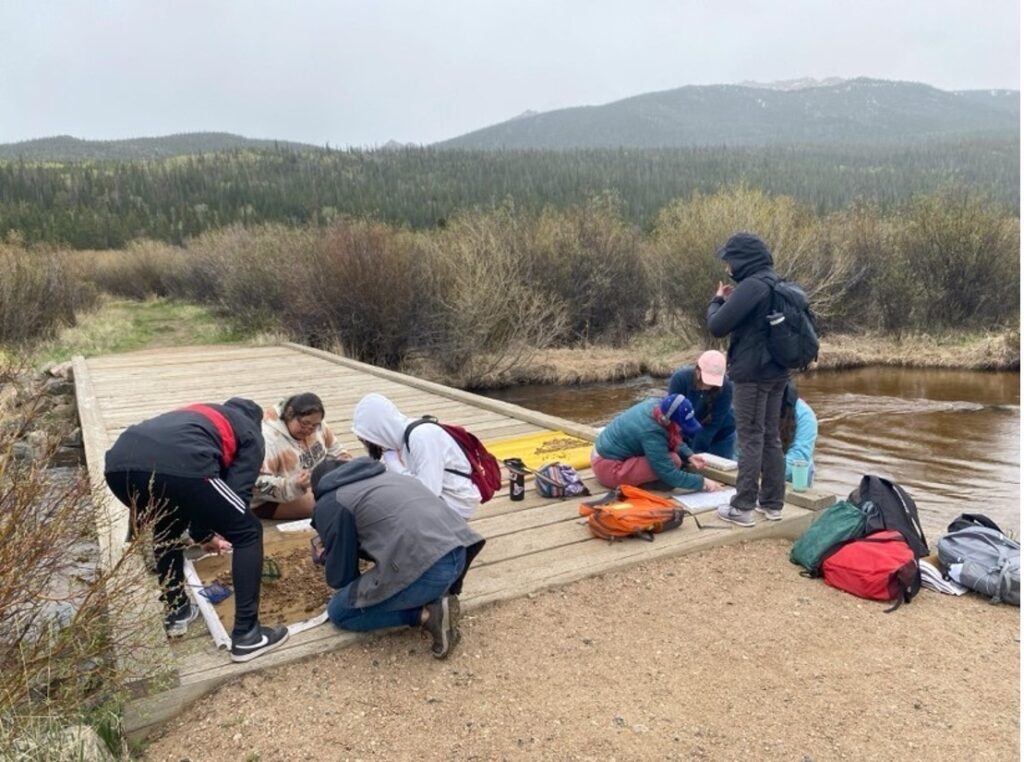
Nature as a metaphor
Soup, the group’s lichen lover, shared a special moment from one of our hikes that resonated deeply with the group. They recounted:
“I found that had been on my bucket list for so long. I’ve been wanting to see it, but I never had any opportunities to go places as far as the Mountain Campus to see lichen that I wouldn’t usually. And when I saw it, it made me so happy. I was in this place where I felt really safe and really good, and I found this lichen. And I was like, this is a metaphor for a change in my life.”
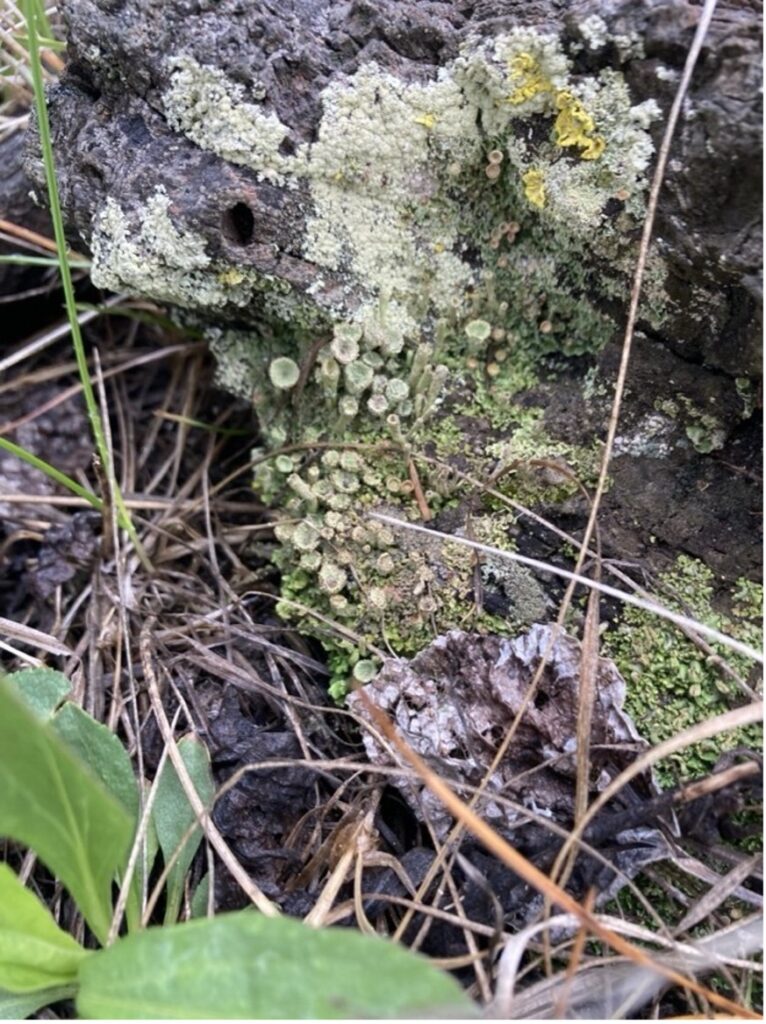
Soup’s experience illustrates how this trip allowed each of us to immerse ourselves in new environments and forge connections with one another. This journey didn’t just offer a chance to explore nature but also to reflect on our own lives and aspirations. For some of us, it opened doors to new ways of thinking and possibilities, inspiring us to pursue new interests or see aspects of our lives through a fresh lens.
Spending time in the mountains provided us with a sense of beauty and belonging, revealing how environments can foster self-discovery and mutual understanding. In just three days, we gained insights into the natural world that not only amazed and enlightened us but also empowered us. We see this experience as a microcosm of what inclusive and supportive communities should look like. By nurturing our shared curiosity about nature, we can create spaces where everyone feels valued and inspired, fostering both individual growth and collective care. This sense of inclusion and mutual respect is essential, whether in the context of wildlife conservation or any field we choose to pursue.
Further Reading
Bailey, A. 2022. Black Outside: Transformative outdoor leadership. Journal of Outdoor Recreation, Education, and Leadership 14(2): 85–98. https://mcnultyfound.org/impact/stories/black-outside. Accessed on July 29, 2024.
Gress, S. and T. Hall. 2017. Diversity in the outdoors: National Outdoor Leadership School students’ attitudes about wilderness. Journal of Experiential Education 40(2): 114–134.
Stern, M. J., R. B. Powell and B. T. Frensley. 2022. Environmental education, age, race, and socioeconomic class: An exploration of differential impacts of field trips on adolescent youth in the United States. Environmental Education Research 28(2): 197–215.
